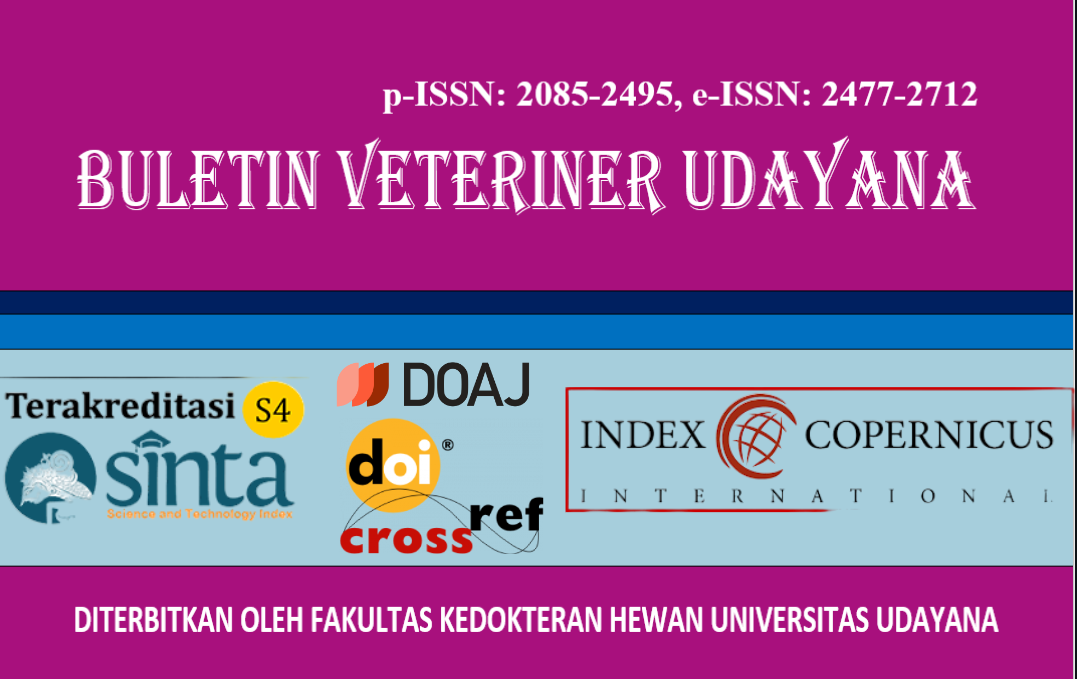MULTIORGAN LESIONS IN PIGLETS COINFECTED WITH STREPTOCOCCUS SUIS AND ASCARIS SUUM: A CASE STUDY
DOI:
https://doi.org/10.24843/bulvet.2025.v17.i05.p12Keywords:
Pigs, streptococcosis, ascaris suumAbstract
Pigs are among the most commonly raised livestock animals for human consumption. However, pig farming often faces significant challenges, particularly related to animal health. This case study aims to describe the anatomical pathology, histopathology, and laboratory findings to establish a definitive diagnosis of the disease that led to the death of a three-week-old piglet from Marga Village, Marga District, Tabanan Regency. Data collection included clinical observations, anamnesis, epidemiological data, and laboratory analyses, which were examined descriptively and qualitatively. The clinical signs observed in the piglet included anorexia, diarrhea, inability to stand, paddling, swelling of the limb joints, body tremors, and reddish skin lesions. Epidemiological data indicated a morbidity rate of 0.9%, a mortality rate of 0.9%, and a case fatality rate of 100%. Gross pathological findings revealed congestion and hemorrhages in the brain, lungs, heart, intestines, and kidneys. The liver and spleen appeared swollen and discolored, as did the stomach. Histopathological examination showed meningoencephalitis; hemorrhagic and edematous bronchopneumonia; intermyocardial edema; splenitis; hepatitis; hemorrhagic glomerulonephritis; gastritis; enteritis; and colitis. The dominant inflammatory cells were lymphocytes and macrophages, indicating a chronic infection. Bacteriological analysis revealed the presence of Streptococcus spp. in the brain, lungs, and liver, while parasitological examination identified Ascaris suum eggs. Based on the findings, the piglet was diagnosed with streptococcosis and ascariasis. Implementing strict biosecurity and sanitation measures is crucial in pig farming to prevent infectious diseases.




